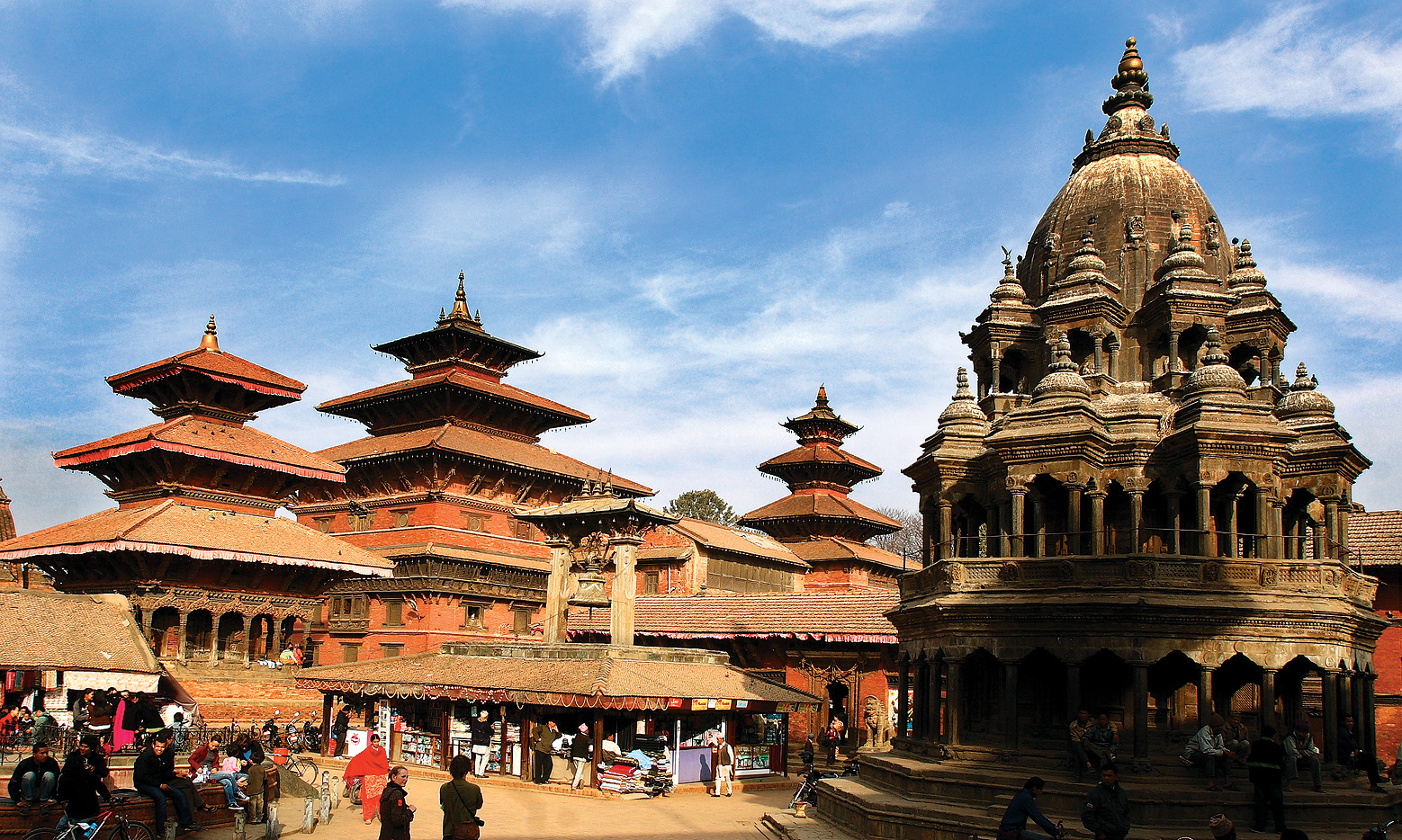Patan Durbar Square, a UNESCO World Heritage site, stands as a testament to Nepal’s rich cultural heritage and architectural brilliance. Nestled in the heart of Lalitpur, one of the three ancient cities in the Kathmandu Valley, this historic site is a must-visit for anyone exploring Nepal. The square is a vibrant tapestry of traditional Newari architecture, ancient temples, and intricate wood carvings, offering a glimpse into the country’s glorious past.
Patan Durbar Square has a history that dates back to the 3rd century BC, although most of the structures visible today were constructed during the Malla Dynasty between the 16th and 18th centuries. The square served as the royal palace for the Malla kings of Lalitpur, who were great patrons of the arts. This patronage is evident in the exquisite temples, statues, and courtyards that adorn the area. The site was also a significant hub for trade and commerce, contributing to its prosperity and the flourishing of arts and culture.
The architecture of Patan Durbar Square is a marvel in itself, characterized by a unique blend of Hindu and Buddhist styles. The square is home to several temples, each with its distinct architectural style and historical significance. Among the most notable is the Krishna Mandir, built entirely of stone, which stands as a fine example of Shikhara-style architecture. The temple is adorned with intricate carvings depicting scenes from the Mahabharata and Ramayana, showcasing the exceptional craftsmanship of the era.
Another prominent structure is the Hiranya Varna Mahavihar, also known as the Golden Temple. This Buddhist monastery, with its stunning golden façade, is a spiritual oasis in the bustling square. The temple is renowned for its beautiful metalwork and the serene atmosphere that attracts both tourists and devotees.
The Patan Museum, housed in a section of the former royal palace, offers visitors a deeper understanding of the region’s history and art. The museum showcases an impressive collection of traditional artifacts, religious objects, and historical relics, providing a comprehensive overview of Nepalese culture.
Patan Durbar Square is not just about architecture; it’s a living, breathing center of culture. The square is a hub for various cultural events and festivals, which are celebrated with great fervor and enthusiasm. One of the most significant festivals is the Rato Machhindranath Jatra, a chariot procession dedicated to the rain god, Machhindranath. This festival, celebrated with grand processions, music, and dance, attracts thousands of visitors, offering them a unique cultural experience.
Tourists visiting Patan Durbar Square can also witness traditional Newari dances and musical performances, which are often held in the courtyards and open spaces. These cultural performances provide a glimpse into the rich traditions and vibrant culture of the Newar community, adding to the charm of the square.
For those interested in shopping, Patan Durbar Square is a haven for artisanal crafts and souvenirs. The surrounding streets and alleys are lined with shops selling traditional handicrafts, jewelry, and artworks. Visitors can purchase intricately designed metal statues, handmade pottery, and beautiful Thangka paintings, which make for perfect souvenirs or gifts. The craftsmanship and attention to detail in these items reflect the rich artistic heritage of the region.
Tourists can also visit the workshops of local artisans to see the creation process of these traditional crafts. These visits provide an insight into the techniques and skills passed down through generations, making the shopping experience even more enriching.
No visit to Patan Durbar Square is complete without indulging in the local cuisine. The area is dotted with restaurants and cafes offering a variety of traditional Newari dishes. From the savory flavors of ‘Yomari’ and ‘Chatamari’ to the rich taste of ‘Bara’ and ‘Samay Baji,’ the local food is a gastronomic delight. These culinary experiences not only satisfy the taste buds but also provide a deeper connection to the local culture and traditions.
For a more immersive experience, tourists can participate in cooking classes offered by local chefs, where they can learn to prepare these traditional dishes themselves. These classes often include a visit to the local market to purchase fresh ingredients, offering a complete culinary journey.
Patan Durbar Square is easily accessible from Kathmandu, with several transportation options available, including taxis, buses, and even bicycles for those who prefer a more eco-friendly mode of travel. The site is open to visitors throughout the year, with the best time to visit during the spring and autumn seasons when the weather is pleasant.
To ensure a comfortable visit, tourists are advised to wear comfortable footwear as the square and surrounding areas involve a fair amount of walking. Hiring a local guide is highly recommended, as they can provide detailed information about the history, architecture, and cultural significance of the various structures, enhancing the overall experience.
The preservation of Patan Durbar Square is of paramount importance, given its historical and cultural significance. Various national and international organizations have undertaken extensive restoration and conservation projects to preserve the architectural integrity of the site. These efforts were particularly intensified after the devastating earthquake in 2015, which caused significant damage to several structures.
The local community, along with governmental and non-governmental organizations, plays a crucial role in these preservation efforts. Sustainable tourism practices are encouraged to ensure that the site remains intact for future generations to appreciate. Visitors are urged to respect the cultural heritage and contribute to the preservation efforts by following the guidelines set by the authorities.
Patan Durbar Square is more than just a historical site; it is a living museum that encapsulates the essence of Nepal’s rich cultural heritage. For tourists, it offers an unparalleled experience that combines history, architecture, culture, and culinary delights. Whether you are a history enthusiast, an art lover, or simply a curious traveler, a visit to Patan Durbar Square promises to be a memorable journey through time.
By exploring the intricacies of its temples, witnessing vibrant cultural festivals, indulging in local crafts, and savoring traditional cuisine, visitors can truly immerse themselves in the unique charm of Patan Durbar Square. As tourism continues to flourish, the preservation of this timeless gem remains a collective responsibility, ensuring that its beauty and significance endure for generations to come.






